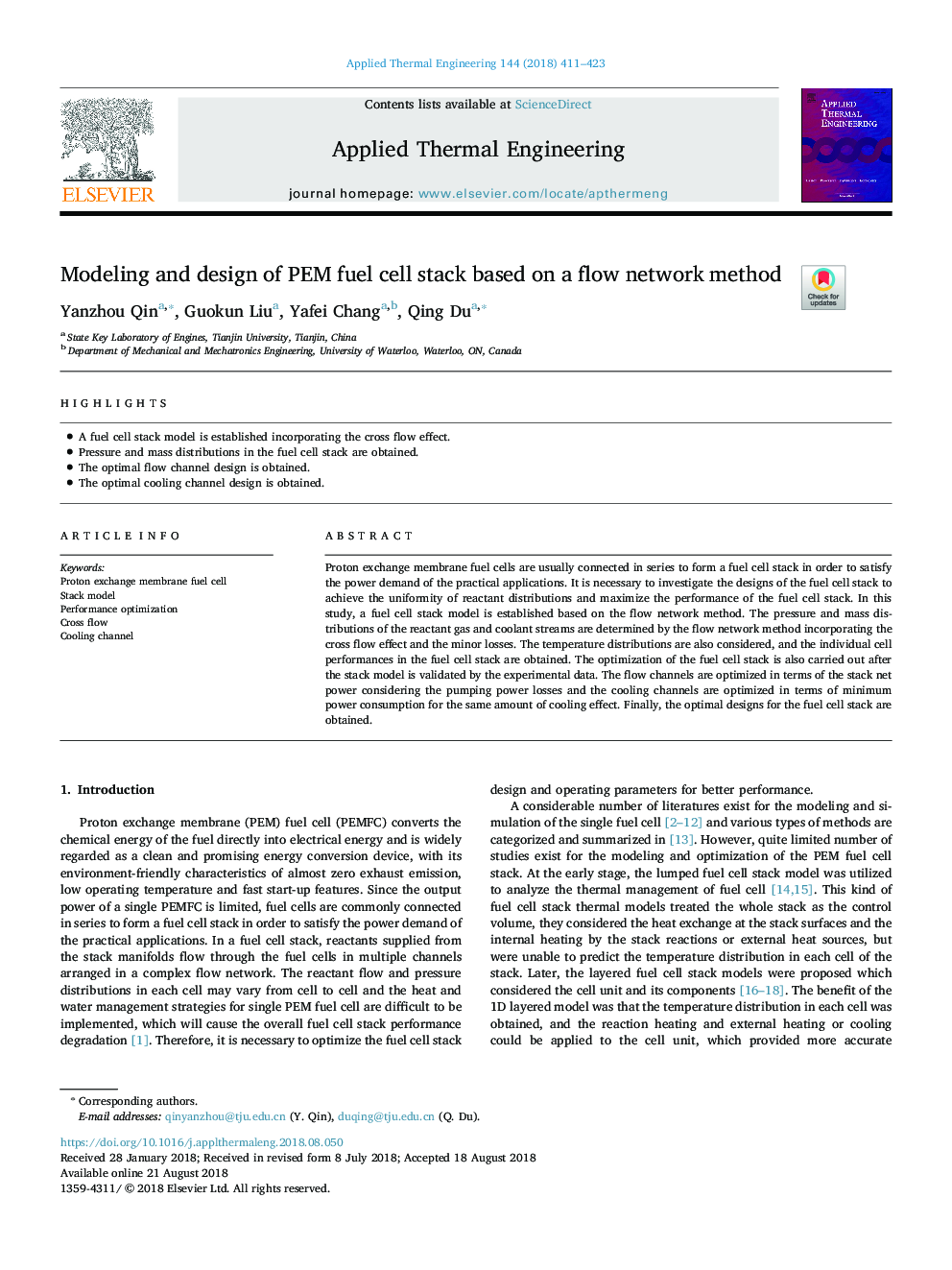| Article ID | Journal | Published Year | Pages | File Type |
|---|---|---|---|---|
| 10127252 | Applied Thermal Engineering | 2018 | 13 Pages |
Abstract
Proton exchange membrane fuel cells are usually connected in series to form a fuel cell stack in order to satisfy the power demand of the practical applications. It is necessary to investigate the designs of the fuel cell stack to achieve the uniformity of reactant distributions and maximize the performance of the fuel cell stack. In this study, a fuel cell stack model is established based on the flow network method. The pressure and mass distributions of the reactant gas and coolant streams are determined by the flow network method incorporating the cross flow effect and the minor losses. The temperature distributions are also considered, and the individual cell performances in the fuel cell stack are obtained. The optimization of the fuel cell stack is also carried out after the stack model is validated by the experimental data. The flow channels are optimized in terms of the stack net power considering the pumping power losses and the cooling channels are optimized in terms of minimum power consumption for the same amount of cooling effect. Finally, the optimal designs for the fuel cell stack are obtained.
Keywords
Related Topics
Physical Sciences and Engineering
Chemical Engineering
Fluid Flow and Transfer Processes
Authors
Yanzhou Qin, Guokun Liu, Yafei Chang, Qing Du,
